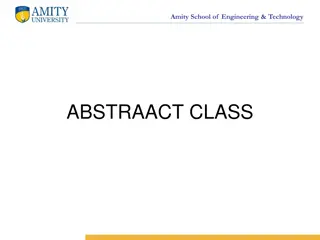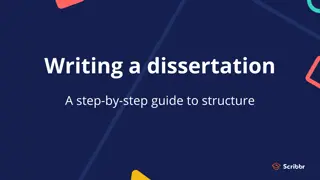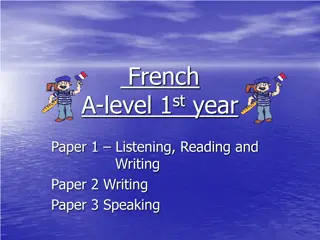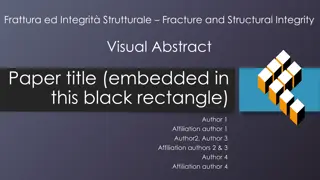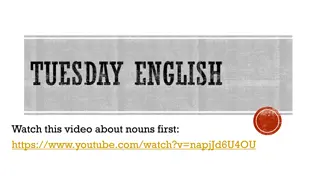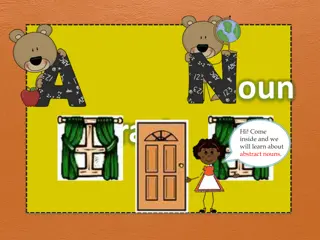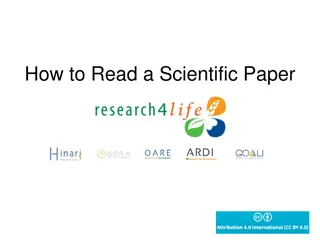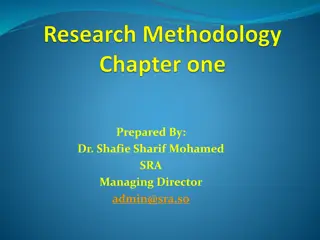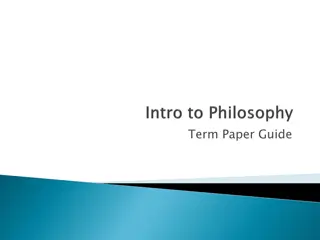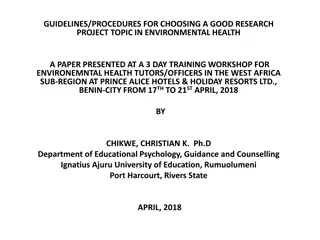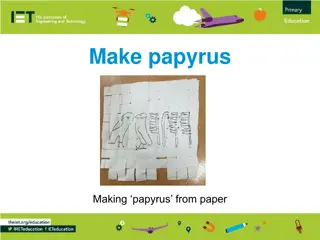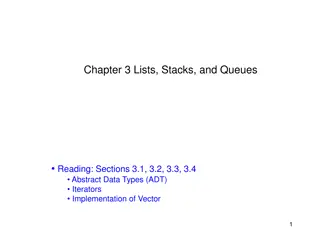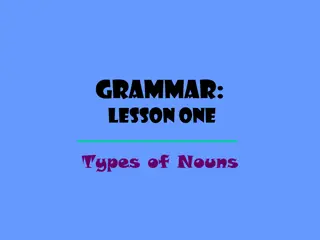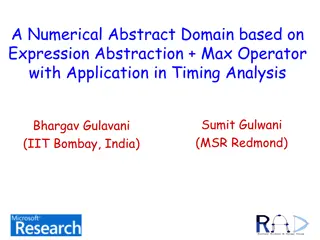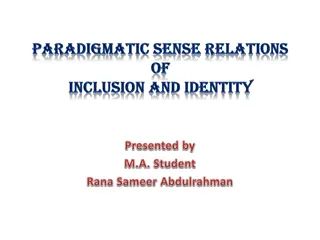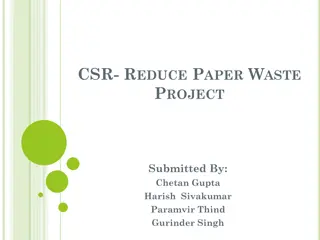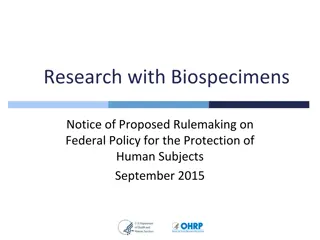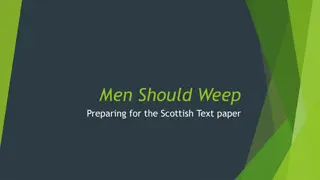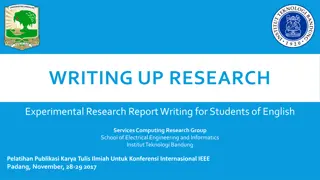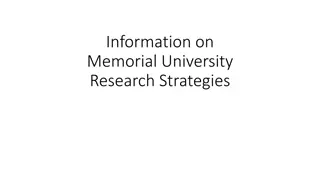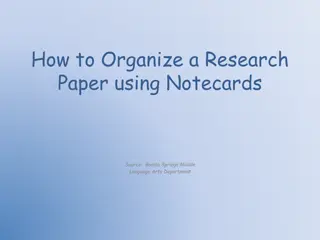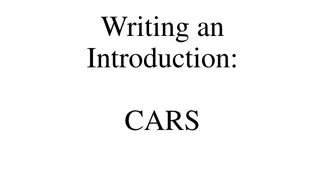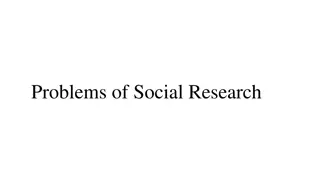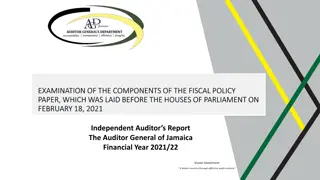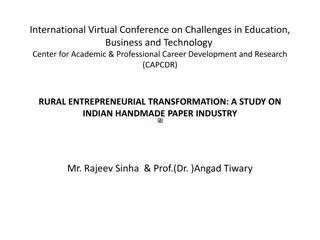Effective Strategies for Expanding an Abstract to a Comprehensive Research Paper
Learn how to transition from a concise abstract to a detailed research paper effectively. Understand the key reasons why research often remains limited to abstracts and explore the significance of thorough science reporting. Discover essential steps in manuscript writing and submission to enhance the quality of your research work.
Download Presentation

Please find below an Image/Link to download the presentation.
The content on the website is provided AS IS for your information and personal use only. It may not be sold, licensed, or shared on other websites without obtaining consent from the author. Download presentation by click this link. If you encounter any issues during the download, it is possible that the publisher has removed the file from their server.
E N D
Presentation Transcript
How to expand an abstract to a full paper ? WM Tilakaratne Dean/Faculty of Dental Sciences University of Peradeniya
Why most research end up as abstracts only? Not enough science! Study was planned just to produce an abstract for a meeting Just to increase the list of publications No facilities to improve the study further Critics at the conference Research team is not working as a productive team No time, no funding etc
What is good science reporting? Adhere to international publishing guidelines Use correct reporting guidelines for the study/paper Adhere to accepted reporting conventions, eg: IMRaD Good literature review; clear study Q Methods, results & answer clearly linked to Q Complete data reported for study type, EBM principles etc Objective, transparent, methodical, ethical
Relate all of IMRaD to the study question Methods Introduction ? STUDY QUESTION ? ? ? Results Discussion
Show youre a good scientist Be objective, transparent, methodical, ethical Objective: do not report intuition, unbacked facts, emotionally, prejudicially Transparent: state all funding; research, statistical, writing, and artwork assistance; donated materials; any ties with industry Methodical: make sure all variables are explained, all study questions are answered fully Ethical: Institutional Review Board approval, Animal Ethics Committee approval, Helsinki Declaration, Patient Consent for research, Patient Consent for publication
The 22 steps of manuscript writing and submission Ask Is it the right time to write? Clarify messages and conclusions by preparing draft tables/figures, with titles/footnotes and key messages highlighted; ask colleagues and supervisor for critical review Decide who will be co-authors; decide who else will help (statistician, etc) and thank them in the Acknowledgements
The 22 steps of manuscript writing and submission Consider the ethics of scientific publication; consult international guidelines Relate your conclusions to the existing body of knowledge Write a working title and abstract Choose the target journal and make notes on the Information for Authors
The 22 steps of manuscript writing and submission Name the main sections of the paper Gather information in Ideas-Folders, in IMRaD order Arrange contents of Ideas-Folders Finalise the design & content of tables/figures, and messages Make a topic outline and then a sentence outline, for each section of IMRaD
The 22 steps of manuscript writing and submission Write a first draft continuously, collecting relevant references as you go See if the first draft needs major alterations, paraphrase without plagiarism Prepare illustrations in final form for target journal Polish prose and content: edit for meaning and style
The 22 steps of manuscript writing and submission Rewrite the title and abstract; check all extra sections (references, acknowledgements, financial disclosures) Request private review by independent critics, as well as by co-authors, statistician, etc Re-read Information for Authors and make necessary adjustments
The 22 steps of manuscript writing and submission Revise as many times as necessary Submit the paper with all necessary documents & cover letter Analyse editor s decision letter and respond appropriately
What reviewers look for: Why do good journals have an acceptance rate of only about 10%? Limited space in paper journal Originality and newsworthiness Relevant /useful for changing practice and improving lives Needs to fit in with journal s scope and target audience Good evidence to add to growing evidence base Best quality of reporting, flawless, convincing, reader-friendly
Top 10 reasons for rejection (1) Inappropriate or incomplete statistics (2) Over interpretation of results (3) Inappropriate or suboptimal instrumentation (4) Sample too small or biased (5) Text difficult to follow
Top 10 reasons for rejection (6) Insufficient problem statement (7) Inaccurate or inconsistent data reported (8) Incomplete, inaccurate, or outdated literature review (9) Insufficient data presented (10) Defective tables or figures
Top 10 reasons for not getting published (1) (2) Failure to revise and resubmit after peer review (3) Poor study design (4) Inadequate description of Methods (5) Suboptimal reporting of Results Failure to write/submit full paper after presenting abstract
Top 10 reasons for not getting published (6) (7) (8) Not following manuscript preparation instructions (9) Submitting in a format not matching to journal (10) Picking wrong journal Getting carried away in Discussion Poor writing
Preparation and submission tips Important topic Good study design Good presentation of study and findings Good interpretation of findings
Preparation and submission tips Bad topic Bad study design Bad presentation Bad interpretation
Bad topic Present already established facts Insignificant research question Irrelevant or unimportant topic Low reader interest Not generalizable
Bad study design Poor experimental design Vague/inadequate description of methods Methods lack sufficient rigor, poor statistical methods Failure to account for confounders No or improper control, small sample No hypothesis, biased protocol
Bad presentation Poor organization Too long and verbose Failure to communicate clearly Poor grammar, syntax, spelling Excessively self-promotional Poorly written abstract
Bad interpretation Conclusions erroneous or unsupported or disproportionate to results; inflated importance Study design does not support inferences; discordance Inadequate link of findings to practice Uncritical acceptance of statistical results; no alternatives Unexplained inconsistencies Discussion inadequate or too long
Finally; Discuss with co-authors who will do what; keep records and backups Satisfy and match the immediate reader (reviewers) and final readers Pre-empt how the reader may misinterpret the material: remove all ambiguities; pre-empt and answer their queries Add signposts and signals to help the reader navigate your paper Include key and up-to-date references; synthesize and critique (not just present) other work in the Introduction and Discussion Reference correctly; do not plagiarise (journal offices software will detect this) Do not commit fraud or other unethical sins akin to plagiarism



